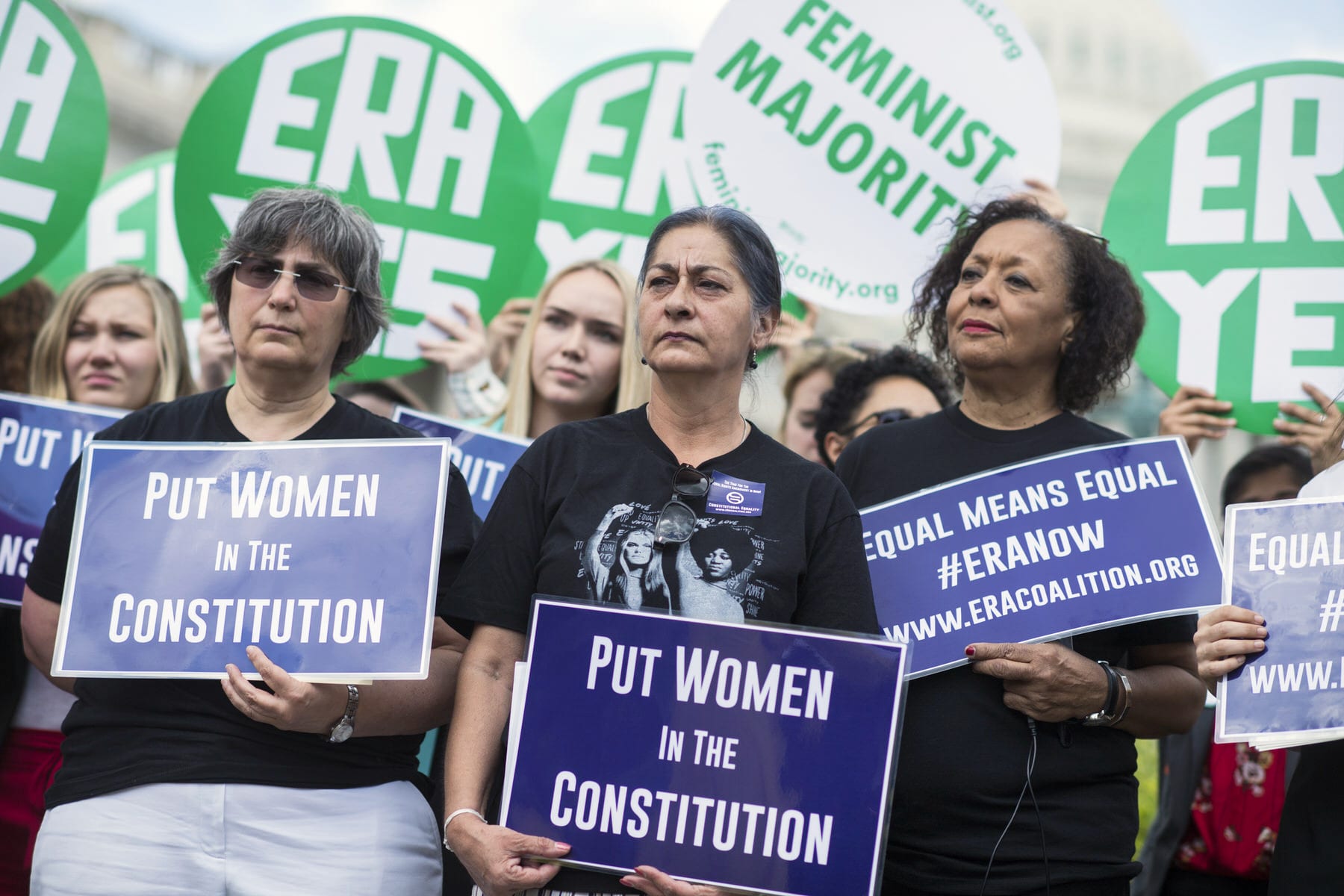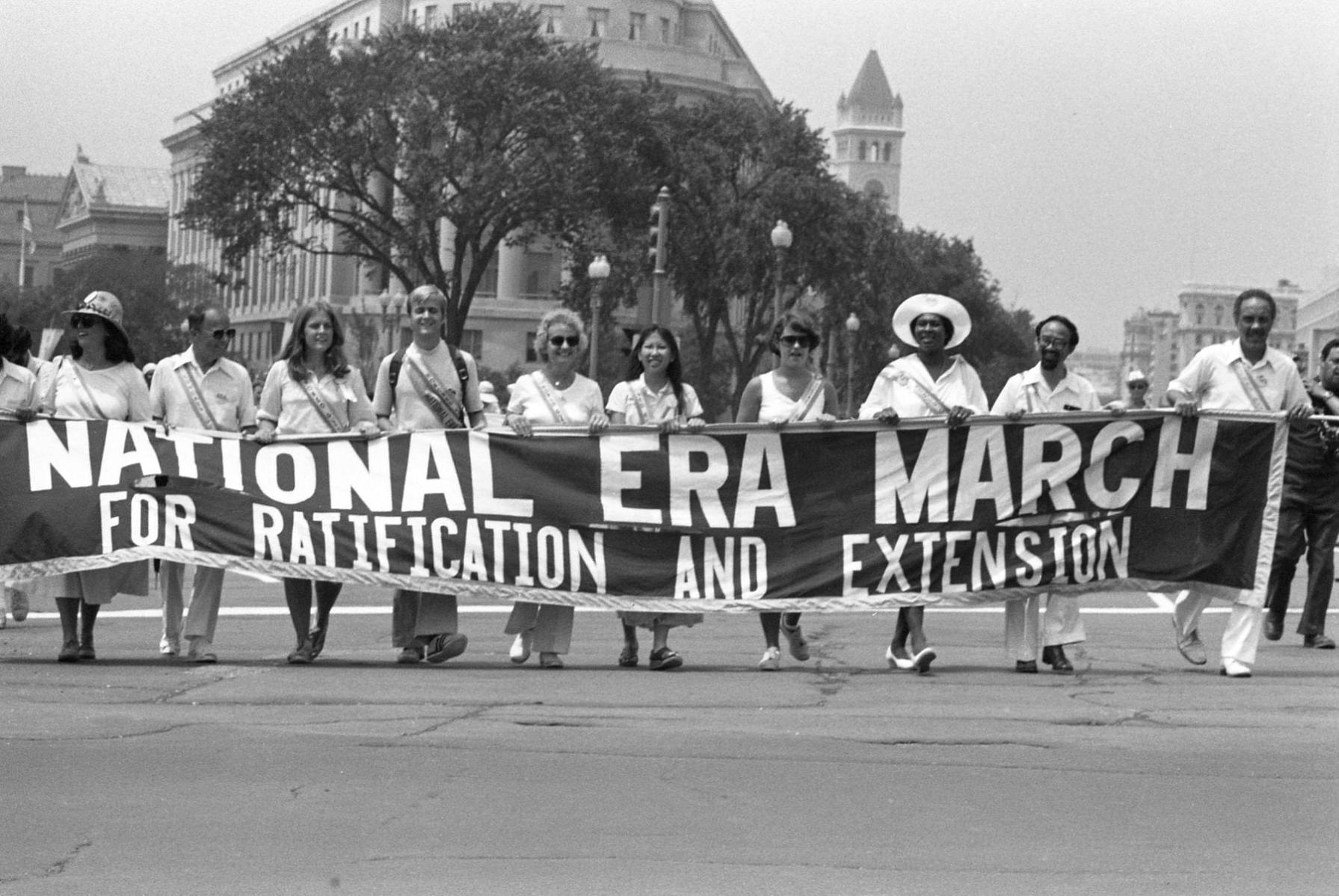Editor’s note: This article has been updated throughout.
Recent efforts to add the Equal Rights Amendment to the U.S. Constitution are nearly 50 years in the making — longer if you count efforts by suffragists — and aim to explicitly protect people from discrimination on the basis of sex.
On Thursday, those efforts weathered another setback. Senate Democrats failed to garner enough support to consider a bill that would recognize the Equal Rights Amendment as part of the Constitution, as not enough Republicans supported the measure in order for it to reach 60 votes — the number needed to avoid endless filibuster.
Although the House voted in 2021 to effectively remove any past deadlines on the Equal Rights Amendment, and so have many state legislatures, the proposed 28th Amendment has been in legal limbo for years — notably, over what entity has the authority to legally recognize it.
Here’s what to know.
What exactly is the U.S. Senate doing?
The Senate voted 51 to 47 on Thursday to invoke cloture, or to cap debate, on S.J. Res. 4, a bill led by Sens. Ben Cardin, Democrat of Maryland, and Lisa Murkowski, Republican of Alaska, to remove the deadline for the ratification of the Equal Rights Amendment. The vote follows the first Senate committee hearing on the ERA since 1984 — which took place in February this year.
Immediately following Thursday’s vote, Senate Majority Leader Chuck Schumer of New York entered a motion that would allow the Senate to reconvene at a later unspecified date and vote again on the bill.
“This issue is too important, and so we’re not giving up,” Schumer said on the Senate floor. Sen. Amy Klobuchar, a Minnesota Democrat, highlighted at a press conference shortly following the vote that two new Republicans voted in support of recognizing the ERA.
Removing the deadline for ratification would allow the amendment to become part of the Constitution because of how the amendment was originally passed in 1972: with a stipulation that state legislatures ratify the ERA in seven years. By the deadline in 1979, only 35 states had ratified the amendment instead of the 38 needed. Congress extended the deadline to 1982, but no additional states passed the amendment in that time.
What exactly is the ERA?
The ERA, or the Equal Rights Amendment, is a proposal to add equality protections “on account of sex” to the U.S. Constitution. In other words, the measure is supposed to add gender protections to the country’s founding legal document. (Groups that support the proposal interchangeably frame it as the potential for legal protections against discrimination on the basis of gender and gender identity.)
Here’s the exact proposed language of section 1 of the ERA: “Equality of rights under the law shall not be denied or abridged by the United States or by any state on account of sex.”
What does it do? Why do supporters of the ERA think the amendment is necessary?
The U.S. Supreme Court has ruled that the equal protection clause under the 14th Amendment includes protections against sex discrimination. But some scholars and judges — notably, the late Justice Antonin Scalia — have expressed a belief that there is no explicit guarantee of protection against sex discrimination in the U.S. Constitution.
Supporters of the ERA believe clear language in the Constitution — which did not originally include the words “women” or “sex” — is increasingly important with a more conservative U.S. Supreme Court that could roll back existing protections. The ERA could bolster arguments in gender-based discrimination cases that pop up in America’s legal system.
Who opposes the ERA? Why?
Some opponents believe it would overturn laws or invalidate programs that have separate policies based on gender, such as educational programs or sports. However, the Supreme Court has provided clear guidelines for the legal use of gender-based programs.
Others have argued that the amendment would overturn abortion restrictions, and conservative groups have highlighted this point increasingly. It’s an argument with no clarity because it hasn’t been seriously challenged in court, though some key supporters working under the ERA Coalition have argued that the measure is not about the medical procedure. Abortion access is separately protected under the 1973 Roe v. Wade ruling.
The current arguments against the ERA is an extension of a battle that began decades ago. In the 1960s and 1970s, conservative activist Phyllis Schlafly claimed the amendment would remove various legal protections for women — an argument that found strong support among White women at the time.
Some argue that the Equal Rights Amendment is no longer needed because court rulings have gradually expanded protections against sex discrimination, rulings that often relied on the legal arguments of Ruth Bader Ginsburg, the late U.S. Supreme Court justice.

How far back do ERA efforts go?
The strategic effort to add the Equal Rights Amendment began in earnest shortly after the 19th Amendment — which granted women the right to vote, though that right was extended mainly to only White women — was added to the Constitution in 1920.
The first version of the Equal Rights Amendment was introduced in Congress in December 1923, according to Julie C. Suk, a legal scholar and author of the book of “We The Women: The Unstoppable Mothers of the Equal Rights Amendment.” The first hearings were held in 1925.
Suk’s book highlights both White and non-White women leaders of the movement. Among them was Mary Church Terrell, a founder of the National Association of Colored Women and later a founder of the NAACP. A Black woman, Terrell advocated for the amendment in the 1940s, decades after she had also championed for voting rights.
As Suk explains in her book, Terrell testified for the ERA in congressional hearings because she believed it could help working mothers, noting that many were often already breadwinners and caregivers for their families.
“I think from early on, the perspective of the working mother often came into the conversation by way of women of color, largely because for the most part it remains true today: Women of color are more disadvantaged than White women as compared to White men, if you just measure things like the pay gap, or even the percentage of women of color who are in low-wage jobs, or the proportion of women of color in essential work,” Suk told The 19th.
The ERA was stuck in a legislative committee for years until then-Rep. Martha Griffiths of Michigan used a parliamentary procedure to bring the measure to a floor vote. Others legislators, including Patsy Mink of Hawaii, the first woman of color and first Asian American elected to Congress, helped spearhead efforts, along with Shirley Chisholm of New York, the first Black woman to be elected to Congress and later the first Black woman to seek the presidential nomination for a major party.
Chisholm argued during a floor speech in 1970: “The time is clearly now to put this House on record for the fullest expression of that equality of opportunity which our founding fathers professed. They professed it, but they did not assure it to their daughters, as they tried to do for their sons. The Constitution they wrote was designed to protect the rights of white, male citizens. As there were no black Founding Fathers, there were no founding mothers — a great pity, on both counts. It is not too late to complete the work they left undone. Today, here, we should start to do so.”
Congress adopted the Equal Rights Amendment in 1972.

So where is the amendment now?
Schumer said on Thursday that Senate Democrats would be bringing the measure back to the floor. To add an amendment to the Constitution, Congress must pass it with a two-thirds majority, and then three-fourths of state legislatures — so 38 out of 50 — must ratify the amendment.
That has happened with the ERA, but it’s complicated.
After just 35 states ratified the amendment, some thought the issue was lost. State lawmakers, led by Black women, revived the effort.
In 2017, the Nevada legislature ratified the ERA. The Illinois legislature followed with ratification in 2018. In January 2020, a new Democratic-controlled Virginia legislature became the 38th state to ratify the Equal Rights Amendment. The back-to-back-to-back votes kicked off a new debate about the status of the amendment.
Democratic attorneys general in Nevada, Illinois and Virginia filed a lawsuit seeking to declare that the amendment is a part of the constitution. A federal judge dismissed the case in March 2021, arguing the attorneys general have no legal standing to sue. The legal questions raised by the lawsuit could take years to be resolved, and some expect it to end up before the U.S. Supreme Court.
Other recent attempts to ratify the ERA have taken place beyond Congress. Last month, a federal appeals court dismissed an attempt to have the Equal Rights Amendment certified by the U.S. Archivist — the chief administrator of the National Archives and Records Administration.
Now people — members of Congress, attorneys general, those who support the ERA and those who oppose it — are trying to figure out what happens next.






